Identifying Queensland fruit fly
When to look for Queensland fruit fly
Queensland fruit fly (QFF, Bactrocera tryoni) is attracted to ripening fruit. In Victoria, fruit fly will be attracted to different fruits as they ripen so in the spring crops such as loquats will be available, then as the season progresses, they will be attracted to summer crops such as apricots, cherries, tomatoes, peaches and pears and then autumn crops of apples, persimmons and quinces.
Adult fruit fly are present all year round, usually they will not move around much when the weather is cold and will spend most of the winter sheltering in warmer spots.
Home gardeners can manage Queensland fruit fly by monitoring its activity and using a range of control methods. For more information refer to Agriculture Victoria’s Controlling Queensland fruit fly in home gardens web page.
Signs of Queensland fruit fly damage
Sting marks about the size of the top of a pin on the surface of the fruit are often the first sign of a QFF infestation. Sometimes the fruit will soften, discolour or rot around the entry and exit points. The best way to determine if fruit is damaged by fruit fly is to cut it open as maggots are often found in the centre of the fruit. See some examples of damage in the photographs below.



Life stages of the Queensland fruit fly
Before QFF become adults, they go through three stages. Temperature will influence the speed at which fruit fly goes through these different stages, for example the development will be slower when the weather is cooler. In the right conditions (i.e., 26oC), QFF can complete their lifecycle in around 30 days.
Egg
The adult female QFF lays eggs inside host fruits and vegetables. The eggs are white, 1 mm long and banana shaped. They can be hard to see and hatch quickly.
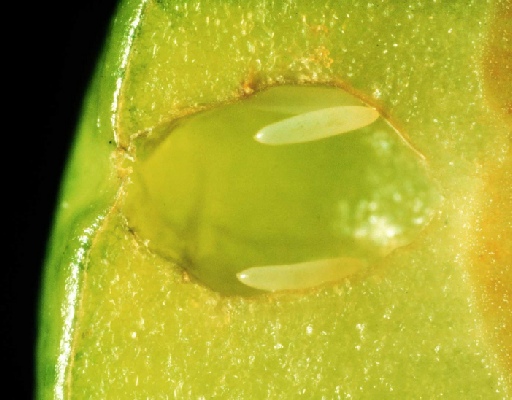
Maggot (larva)
Eggs develop into maggots (larvae) inside the fruit. Maggots are 5 mm to 10 mm long and creamy-white in colour. They usually eat towards the centre of the fruit and cause it to rot, though the fruit might look in good condition from the outside. Maggots do not have an obvious head capsule like other common fruit pests such as codling moth.
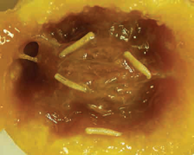
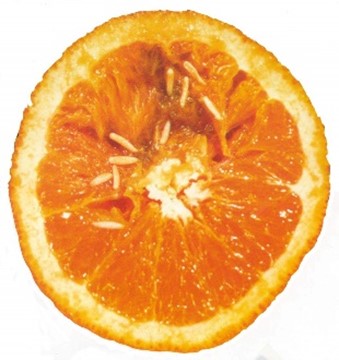
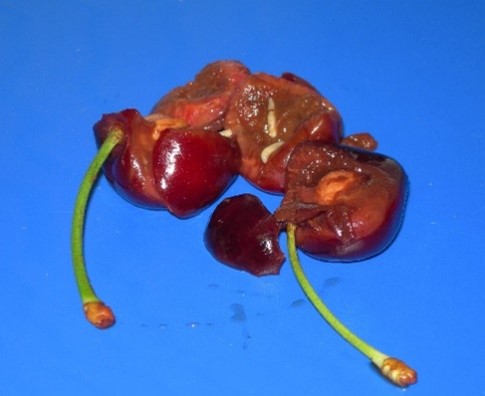
Pupa
Maggots exit the host fruit and burrow into the ground where they change into oval, brown, hard pupae. The adult QFF will develop inside the pupa and emerge from the ground.
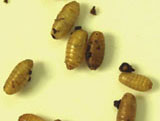
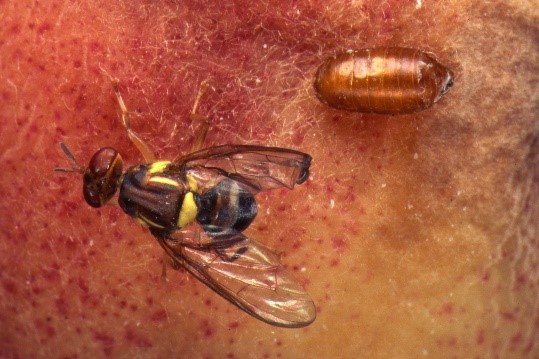
Adult Queensland fruit fly
Adult QFF are about 7 mm long and are reddish-brown in colour, with distinct yellow markings.
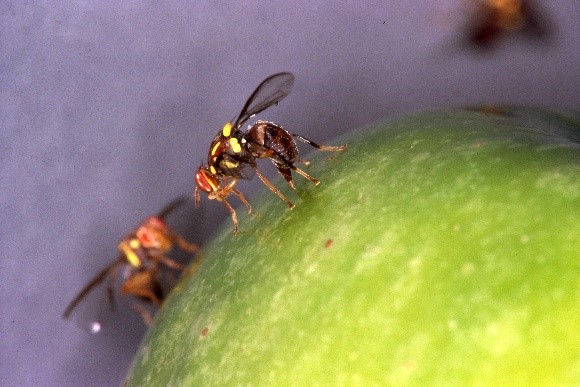
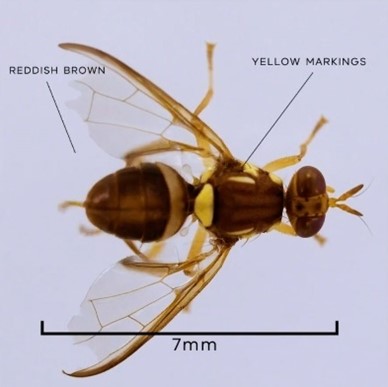
Here is a short video of a Queensland fruit fly adult.
[Narrator]
So what do Queensland fruit flies look like? Adult flies are approximately 7 millimetres long and are reddish-brown in colour, with distinct yellow markings.
Adult Queensland fruit flies are sometimes confused with Drosophila melanogaster commonly known as vinegar flies or compost flies. Drosophila melanogaster are much smaller than QFF at about 2–3 mm and are commonly found in composts and already damaged or rotting fruit.
Do you need to report Queensland fruit fly in Victoria?
Agriculture Victoria does not require Queensland fruit fly to be reported. Queensland fruit fly is now considered an established pest and found throughout Victoria.